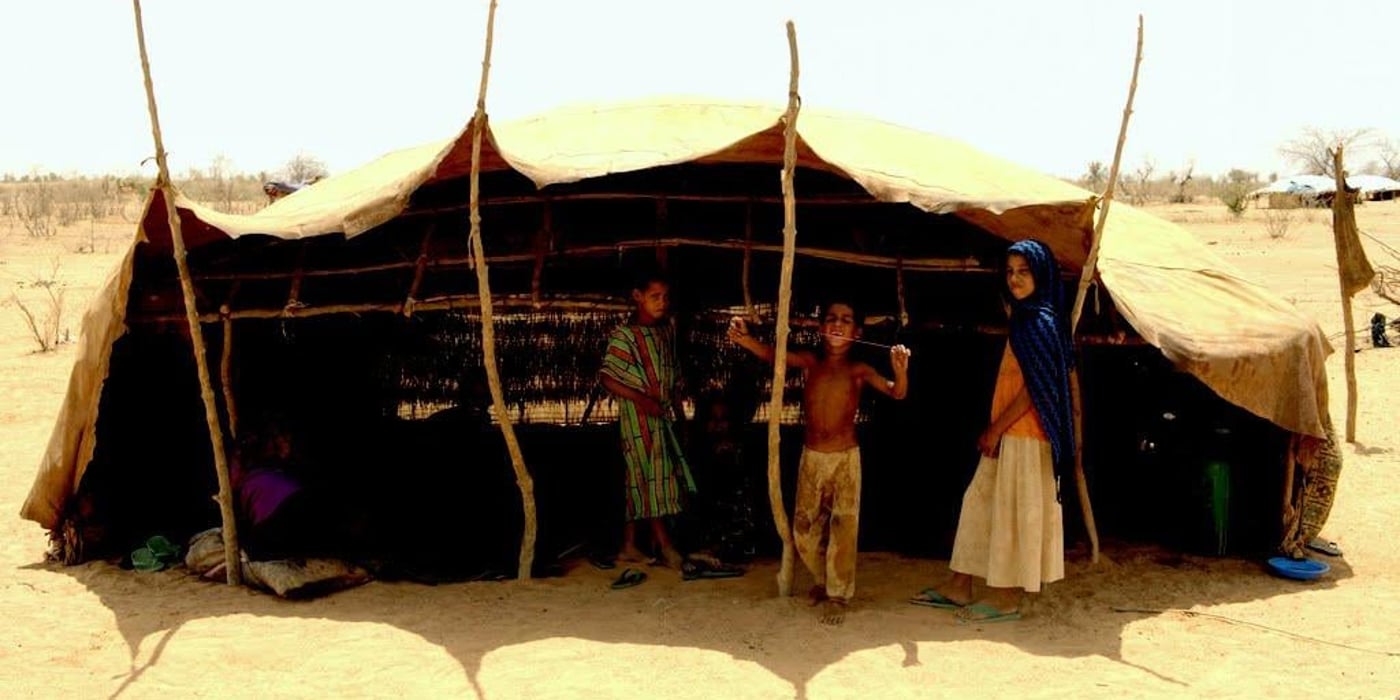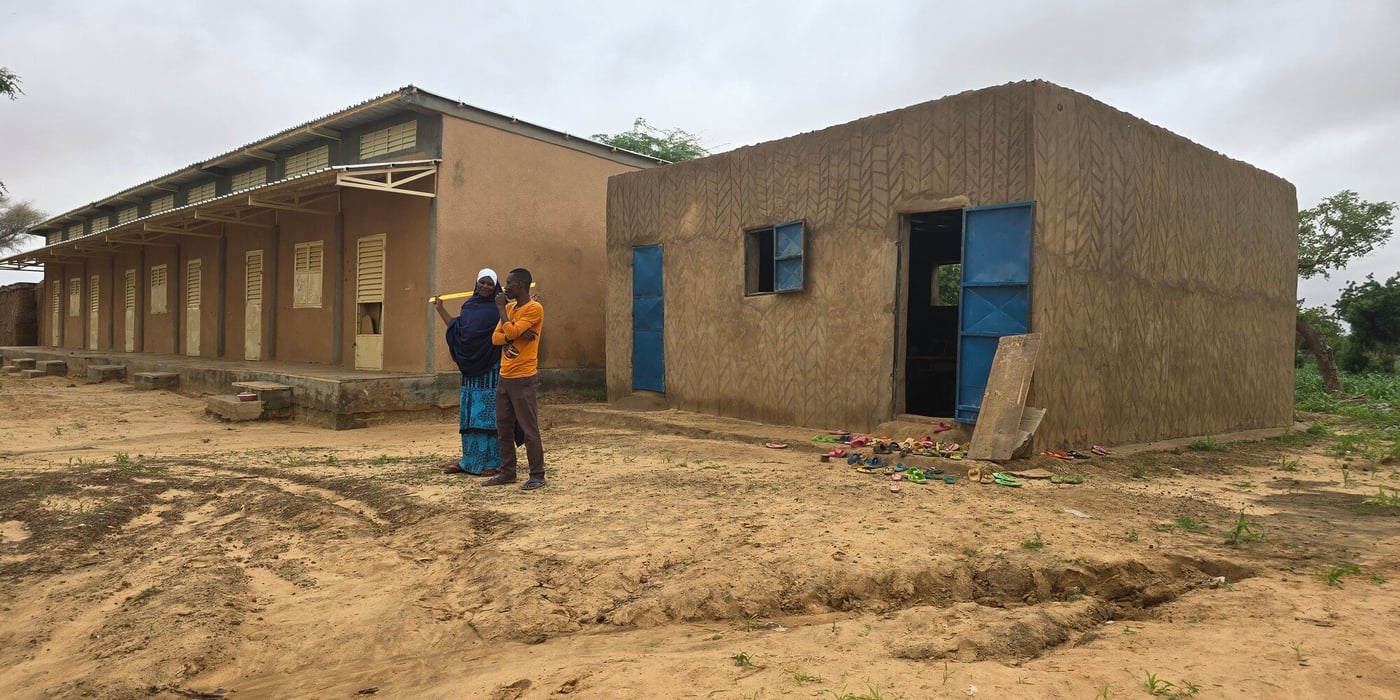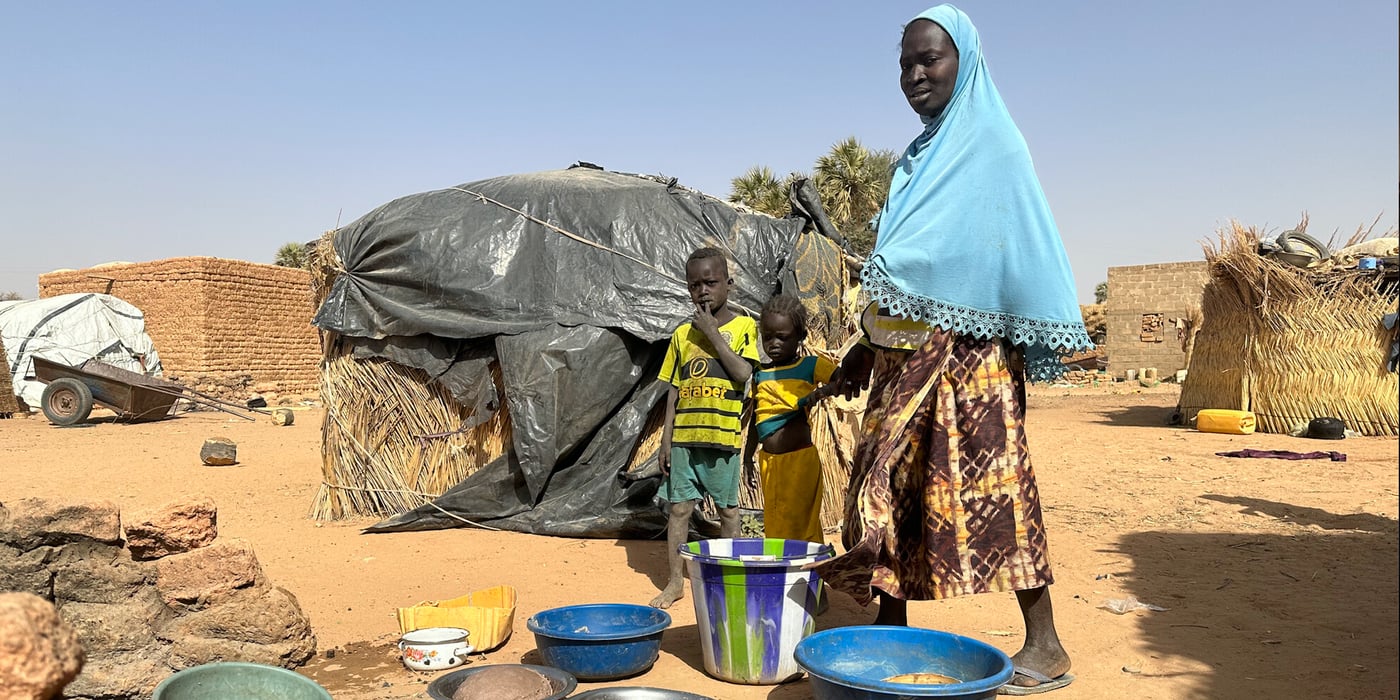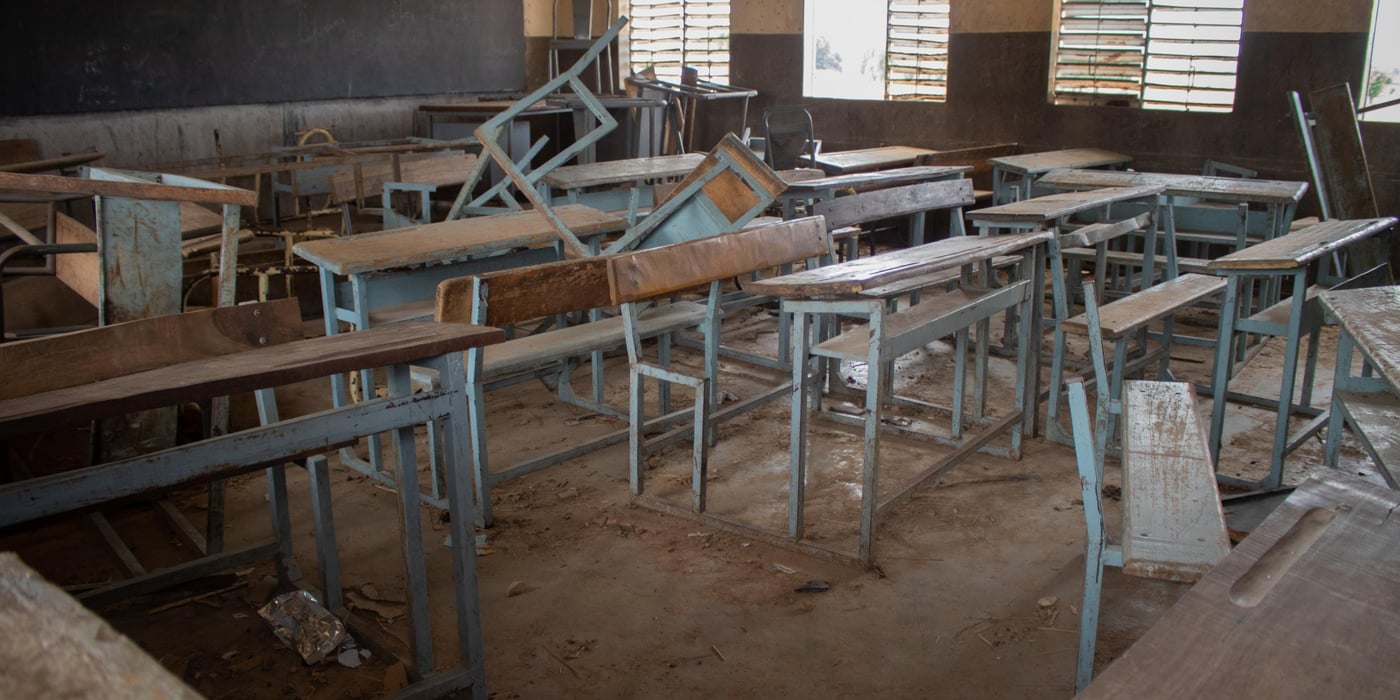
The Malian refugee women in Ferrerio camp in northern Burkina Faso know exactly how to construct a shelter that will stand up to the strong winds, scorching heat and heavy rains that characterize different seasons in the Sahel area.
Rope, machetes, mats, plastic sheeting and eucalyptus poles are handed out by NRC, after which the Malian refugees proceed to construct their own shelters. Women lead the way It is customary amongst the Tuareg tribes in the Sahel that women lead the way in constructing and designing shelters.
For 40-year-old Fatima Welet Hamat there was no other choice. With her husband remaining in Mali, she has to assemble the shelter herself, assisted by her children and neighbours when needed. Only one day after receiving the shelter kit, the shelter is close to completed. Fatima is all smiles as she invites NRC to have a look inside.
Fatima and her son, Khalid, in front of the shelter frame. NRC’s staff have combed entire camps on foot to reach most vulnerable families such as Fatima and her children.
- I am very, very happy. Look around, here is much more space, says the proud new homeowner surrounded by her children.
- There is even enough space for the little ones to play inside, and I have room for visitors. NRC’s social worker notices that Fatima’s shelter is larger than recommended, leaving small gaps in the roofing. Fatima agrees:
– Yes, I know. I will have to do some adjustments and improvements but that is no problem at all. We are used to this, she insists. The recent improvement in Fatima and her family’s lives follows some troubled months with an arduous escape from the volatile northern Mali in March this year.
More than 100,000 refugees
- I fled with my children because of the fighting in our area and because we were scared of the Islamists, Fatima explains.
– We travelled on foot during the day and hid in the bushes at night. The journey from Gao in northern Mali lasted an entire month before the exhausted family finally found safety in the Ferrerio camp in Burkina Faso.
According to UNHCR, The UN’s Refugee Agency, more than 100,000 civilians from northern Mali have sought refuge in Burkina Faso. Most are residing in camps near the border where the UN and humanitarian partners are working hard with limited funding to provide much needed services such as food, clean water, sanitation and shelter.
Education and livelihood programmes are being planned, but most children are still to attend their first day in school. NRC's shelter expert on site with local staff, organizing the distribution of shelter materials.
NRC’s programme in Burkina Faso
NRC initiated operations in Burkina Faso in May 2012 in close cooperation with the Burkinabe government, the UN and NGOs. NRC is currently implementing a shelter programme, benefitting some 1,000 vulnerable families in Ferrerio and Gandafabou camps.
Other activities include a forthcoming construction of a health clinic and water trucking to Gandafabou camp. NRC’s projects are carried out with funding from the Swedish International Development Agency (SIDA) and Bureau of Population, Refugees and Migration (BPRM).




